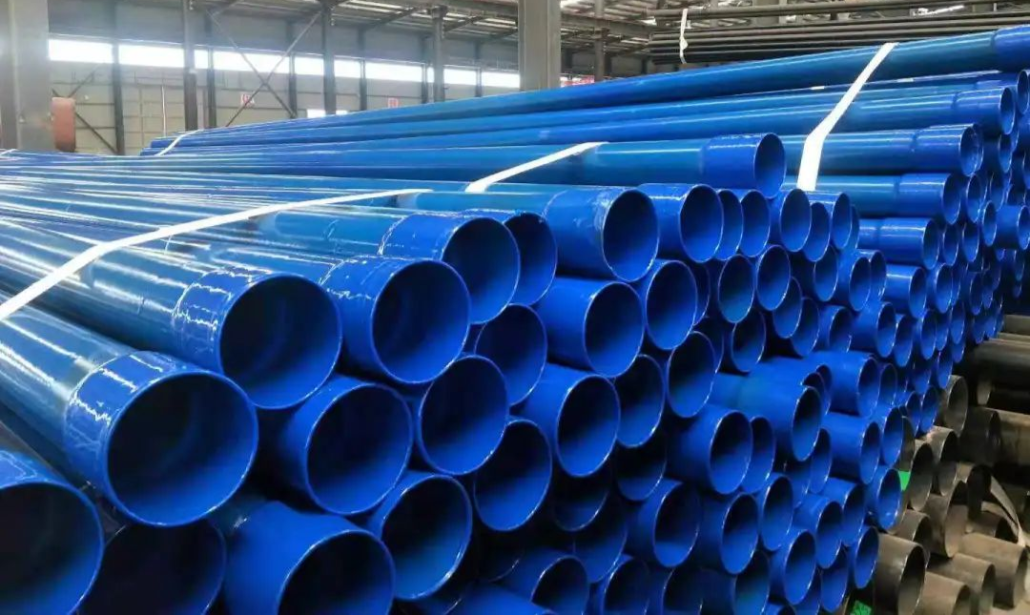How To Clean Internal And External Plastic-coated Steel Pipes
There is a cleaning and cleaning step in the maintenance of internal and external plastic-coated steel pipes, so the cleaning step is also very important. How can it be implemented well? Steel Pipe has some detailed introduction in these aspects. I hope everyone can learn this.
Cleaning of internal and external plastic-coated steel pipes uses solvents and emulsions to clean the surface of the steel to achieve the effect of removing oil, grease, dust, lubricants and similar organic matter. However, it cannot remove rust, oxide scale, welding flux, etc. on the surface of the steel, so it is not suitable for anti-corrosion production. It is only used as an auxiliary method. Rust removal: First, use tools such as wire brushes to polish the surface of the steel to remove loose or lifted oxide scale, rust, welding slag, etc.
The rust removal of hand tools can reach Sa2 level, and the rust removal of power tools can reach Sa3 level. If the surface of the steel is adhered to a strong iron oxide scale, the rust removal effect of the tool will not be ideal and the anchor pattern depth required for anti-corrosion construction will not be reached. Pickling: Chemical and electrolytic methods are generally used for pickling treatment. Only chemical pickling is used for pipeline anti-corrosion, which can remove scale, rust, and old coatings. Sometimes it can be used as a reprocessing after sand blasting and rust removal.
Although chemical cleaning can make the surface reach a certain degree of cleanliness and roughness, its anchor lines are shallow and it is easy to cause contamination. Spray (throw) rust removal: Spray (throw) rust removal uses a high-power motor to drive the spray (throw) blade to rotate at high speed, so that abrasives such as steel sand, steel shots, iron wire segments, minerals, etc. are sprayed internally and externally under the effect of centrifugal force. The surface of the plastic-coated pipe is sprayed (thrown), which not only can completely remove rust, oxides and dirt, but also the internal and external plastic-coated pipes can achieve the required uniform roughness under the action of strong abrasive impact and friction. .
The reason is that when steel is alloyed with chromium, the type of surface oxide is changed to a surface oxide similar to that formed on pure chromium metal. When the addition amount of chromium reaches 10.5%, the atmospheric corrosion resistance of the equal-diameter tee is significantly increased. However, when the chromium content is higher, although the corrosion resistance can still be improved, it is not significant. Moreover, if the surface layer is damaged, the exposed steel surface will repair itself by reacting with the atmosphere, re-forming the oxide, and continuing to provide protection. Steel-plastic pipes must use cathodic maintenance while using anti-corrosion coatings.
After the rust removal treatment on the surface of the steel plate, 95% of the surface area is removed from visible rust, and 5% of the area and original rust spots remain. Use an alloy steel shovel to remove the old paint on the gas tank. This oxide layer is extremely thin, and the natural luster of the surface of the elbow can be seen through it, giving the elbow a unique surface. Use a wire brush to remove internal rust from welds, reinforcement plates and other dead ends.
The adhesion of the coating to the substrate is an important indicator for evaluating the corrosion resistance of the coating. The stronger the adhesion, the better the corrosion resistance, and the more durable the coating. After the surface treatment is completed, apply epoxy coal pitch primer twice to prevent moisture and rust. Use acetone or other volatile cleaning agents to remove oil, tar and other dirt on the surface of the gas tank. Clean the internal and external plastic-coated steel pipes. After cleaning, the surface should be dry, oil-free and dirt-free.


Leave a Reply
Want to join the discussion?Feel free to contribute!